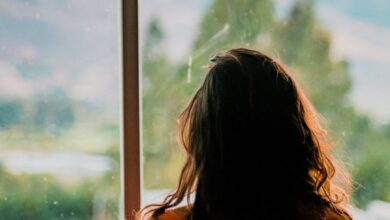Do You Need Special Equipment to See the Aurora Borealis
The mesmerizing dance of the Aurora Borealis, or Northern Lights, captivates many travelers and nature enthusiasts. This natural phenomenon occurs when charged particles from the sun collide with gases in the Earth’s atmosphere, resulting in vibrant colors that swirl across the night sky. For those yearning to witness this breathtaking spectacle, a common question arises: Do you need special equipment to see the Aurora Borealis?
Understanding the Basics of Aurora Viewing
To enjoy the Aurora Borealis, your most essential tool is patience. The Northern Lights are unpredictable, and their visibility depends on several factors, including solar activity, weather conditions, and light pollution. The best time to observe the auroras is during the winter months, typically between September and March, when long, dark nights provide optimal viewing opportunities. Regions near the Arctic Circle, including parts of Alaska, Canada, Norway, and Sweden, offer prime locations for aurora sightings.
Optimal Viewing Locations
Choosing the right location is vital for a successful aurora experience. Areas far from city lights and urban noise create the perfect backdrop for this natural light show. National parks and remote wilderness areas often provide the ideal setting. Popular destinations include Fairbanks in Alaska, Yellowknife in Canada, and the Lofoten Islands in Norway. These places boast clear skies and minimal light interference, enhancing your chances of witnessing the dazzling display.
The Importance of Timing
Timing your visit can significantly impact your aurora-watching experience. Monitoring solar activity and weather forecasts can help you plan your trip effectively. Websites and apps dedicated to aurora predictions provide real-time updates on solar storms and viewing conditions. The Kp index, which measures geomagnetic activity, is crucial; a higher Kp index indicates a greater likelihood of auroral displays at lower latitudes.
Essential Gear for Comfort
While you don’t need specialized equipment to see the Northern Lights, certain gear can enhance your comfort and enjoyment. Warm clothing is paramount, as temperatures in aurora-viewing regions can plummet. Layering is key; thermal base layers, insulated jackets, and waterproof outer layers will help keep you warm. Don’t forget sturdy, insulated boots, gloves, and hats to protect against the cold.
A good camera can also enhance your experience by capturing the beauty of the auroras. While smartphones can take decent photos, a DSLR or mirrorless camera with manual settings allows for better exposure control. A tripod is essential for stabilizing your camera during long exposure shots. Experimenting with exposure times and ISO settings can yield stunning results, turning your aurora sightings into lasting memories.
Binoculars and Telescopes: Not Necessary
While binoculars and telescopes can enhance your view of celestial events, they are not necessary for experiencing the Northern Lights. The auroras are best enjoyed with the naked eye, as they often cover vast areas of the sky. Using binoculars may limit your perspective and make it challenging to appreciate the full scope of the display. Instead, focus on finding a comfortable spot where you can take in the entirety of the breathtaking scene.
Capturing the Moment
If photography is your passion, consider investing in a remote shutter release. This device allows you to capture images without shaking the camera, which is especially useful during long exposures. Practice your photography skills in advance to familiarize yourself with the settings and techniques necessary for capturing the Northern Lights.
Preparing for the Unpredictable
Ultimately, the key to a successful aurora viewing experience lies in preparation and adaptability. The Northern Lights are a natural phenomenon, and there are no guarantees. Weather conditions can change rapidly, and auroras may appear unexpectedly. Embrace the adventure, be patient, and stay hopeful.
Final Thoughts
Witnessing the Aurora Borealis is an unforgettable experience that requires little more than a keen eye and a sense of wonder. While specialized equipment may enhance your comfort and photography, the most crucial factor is your willingness to venture into the night and be captivated by one of nature’s most extraordinary displays. So grab your warm clothes, find a dark sky, and prepare to be amazed by the dancing lights above.







